Philadelphia's Extravagant New Year's Tradition
Every January 1st, Philadelphia wakes up not to a quiet start to the New Year but to the colorful, eccentric, and downright delightful spectacle known as the Mummer’s Parade. This event, a tradition since 1901, is a delightful mix of music, costumes, and revelry that can only be described as part Mardi Gras, part vaudeville, and all Philadelphia.
Origins of the Mummer’s Parade
The Mummers Parade's origins are as colorful and rich as the event itself. It all began in the mid-17th century, when Swedish and Finnish settlers in the Philadelphia area introduced their own New Year's customs. These early traditions included masquerading, merrymaking, and the unique practice of "mumming," where groups of costumed individuals would go house to house performing short skits, singing songs, and generally spreading holiday cheer. These mummers would receive food, drink, or small gifts in return for their performances, creating a festive atmosphere that embraced the spirit of community.
As Philadelphia grew, so did its immigrant population, each group bringing its own traditions to the melting pot. English, Irish, German, and other European settlers added their customs to the mix, enriching the mumming tradition. By the 19th century, these practices had evolved into a more structured and public celebration, with organized groups—called “New Year Shooters and Mummers Association”—performing elaborate routines in neighborhoods across the city.
The first official Mummers Parade, as we know it today, was held on January 1, 1901. The city supported this formalized event to help curb some of the previous celebrations' more unruly and spontaneous aspects. Philadelphia provided funding and a dedicated route, transforming the chaotic revelry into an organized, family-friendly parade that all could enjoy.
The parade quickly grew in popularity, and by the 1920s, it had become a major city event, attracting thousands of participants and spectators. The introduction of divisions such as Comics, Fancies, String Bands, and Fancy Brigades helped to structure the performances and added a competitive edge that spurred groups to outdo each other with ever more creative and elaborate displays.
The Great Depression and World War II presented challenges, but the spirit of the Mummers Parade endured, adapting to the times while maintaining its core traditions. The post-war era saw a resurgence in its popularity, with television broadcasts bringing the spectacle into homes across the region, further solidifying its place in Philadelphia's cultural landscape.
Throughout its history, the Mummers Parade has reflected the changing social and cultural dynamics of Philadelphia. It has been a platform for social commentary and satire, with performances often addressing current events and political issues. Despite occasional controversies, the parade has remained a beloved institution, celebrated for its creativity, inclusiveness, and the sheer joy it brings to participants and spectators alike.
Today, the Mummers Parade is not just a local tradition but a symbol of Philadelphia's rich cultural heritage. It stands as a testament to the city's ability to embrace and celebrate diversity, bringing together people from all walks of life in a shared celebration of community, creativity, and the joyous spirit of the New Year.
The Parade Structure
The Mummer’s Parade consists of several divisions, each bringing its own unique flavor to the event:
- Comics: The parade kicks off with the Comics, the heart and soul of the event. These groups, dressed in outrageous, often satirical costumes, perform skits and gags that poke fun at current events, politics, and just about anything else. If you’ve ever wanted to see politicians turned into giant, dancing puppets, this is your chance.
- Fancies: Next up are the Fancies, who bring a touch of glitz and glamour to the parade. Think sequins, feathers, and some of the most elaborate costumes you’ll ever see. These performers take the idea of “dressing to impress” to a whole new level.
- String Bands: The String Bands are a musical delight. These groups combine banjos, saxophones, accordions, and more to create lively, toe-tapping tunes. They don’t just play music; they perform it, with coordinated dances and themed costumes that turn the streets into a mobile Broadway show.
- Fancy Brigades: Closing out the parade are the Fancy Brigades. These groups put on highly choreographed performances that include everything from intricate dance routines to elaborate sets. It’s like a Broadway production decided to take to the streets for a day.
Fun Facts and Trivia
- Feathered Fanfare: The Mummer’s Parade is famous for its costumes, which often include thousands of dollars’ worth of feathers, sequins, and other materials. Some groups spend the entire year preparing for the next parade.
- Mummers Speak Their Own Language: The term “Wenches” refers to male members of the Comic Division who dress in old-fashioned women’s clothing. Meanwhile, “Back Steps” are the traditional strut steps Mummers perform to the tune of “Oh! Dem Golden Slippers,” the parade’s unofficial anthem.
- Weather Warriors: Come rain, snow, or freezing temperatures, the parade goes on. The Mummers are a hardy bunch, and no amount of adverse weather can dampen their spirits.
- Family Affair: Many Mummer groups are multi-generational, with families participating together year after year. It’s not uncommon to see grandparents, parents, and children all strutting their stuff in the parade.
The Mummer’s Strut
No article about the Mummer’s Parade would be complete without mentioning the iconic “Mummer’s Strut.” This signature dance move involves a lot of fancy footwork and is performed to the aforementioned “Oh! Dem Golden Slippers.” It’s a sight to behold and a rite of passage for any true Philadelphian.
Once the parade winds down, the party doesn’t stop. South Philly’s 2 Street (Second Street) becomes the place to be, as Mummers and spectators alike continue the festivities with music, dancing, and plenty of cheer. If you’re ever in Philadelphia on January 1st, 2 Street is where you’ll want to end up.
The Mummer’s Parade is a celebration of community, creativity, and a little bit of good-natured chaos. It’s a day when Philadelphians come together to laugh, dance, and ring in the New Year in the most fantastically flamboyant way possible. Whether you’re a local or a visitor, the Mummer’s Parade is an experience you won’t soon forget. So grab a spot along the parade route, cheer for your favorite groups, and don’t forget to strut your stuff—Philadelphia style.
Please Share our Content


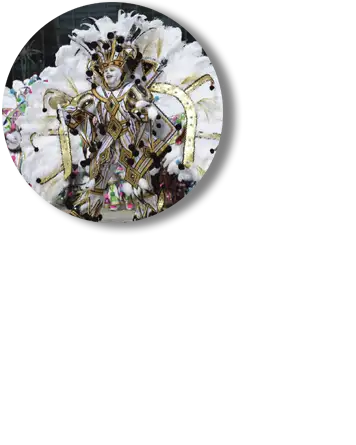



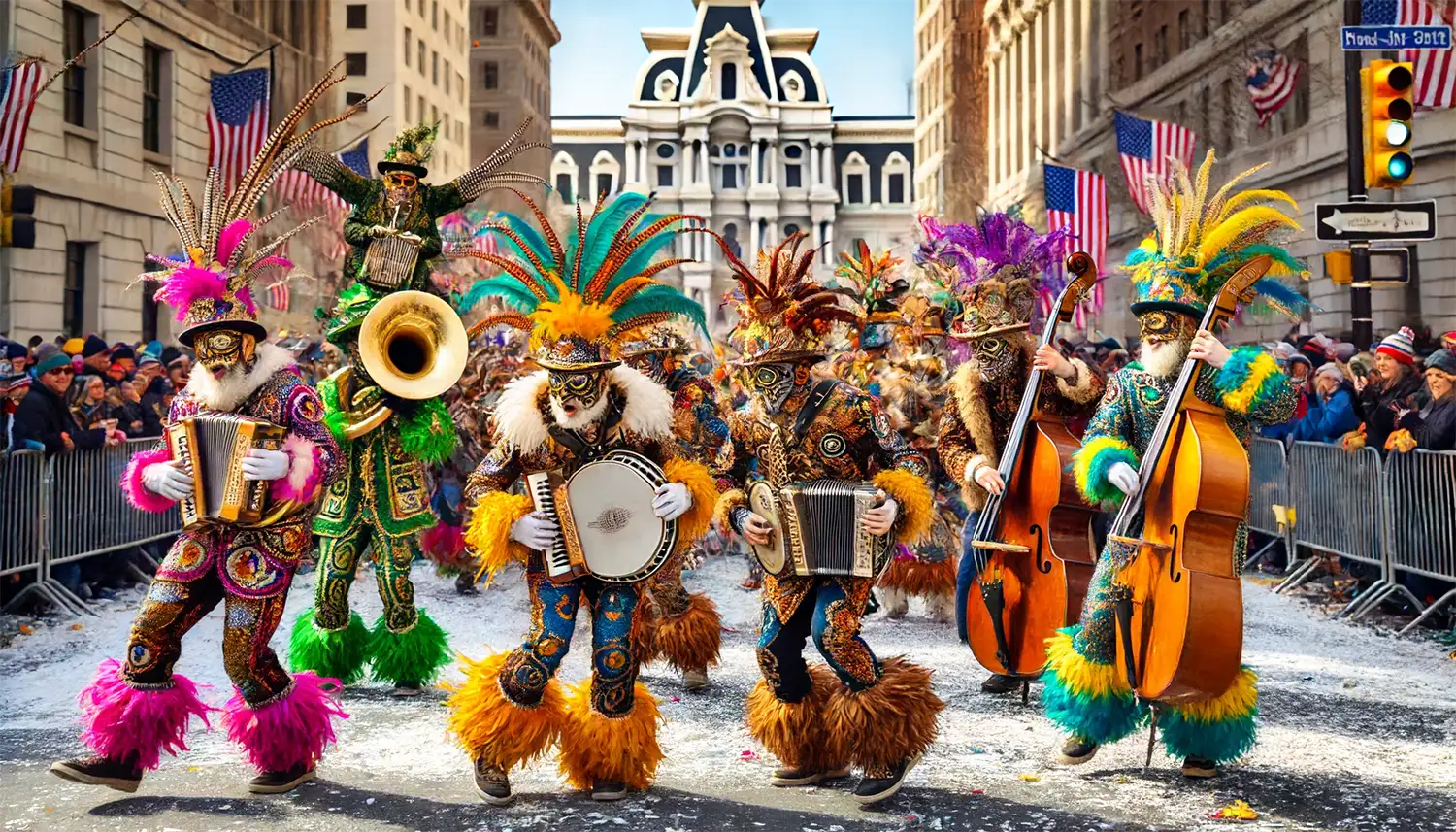
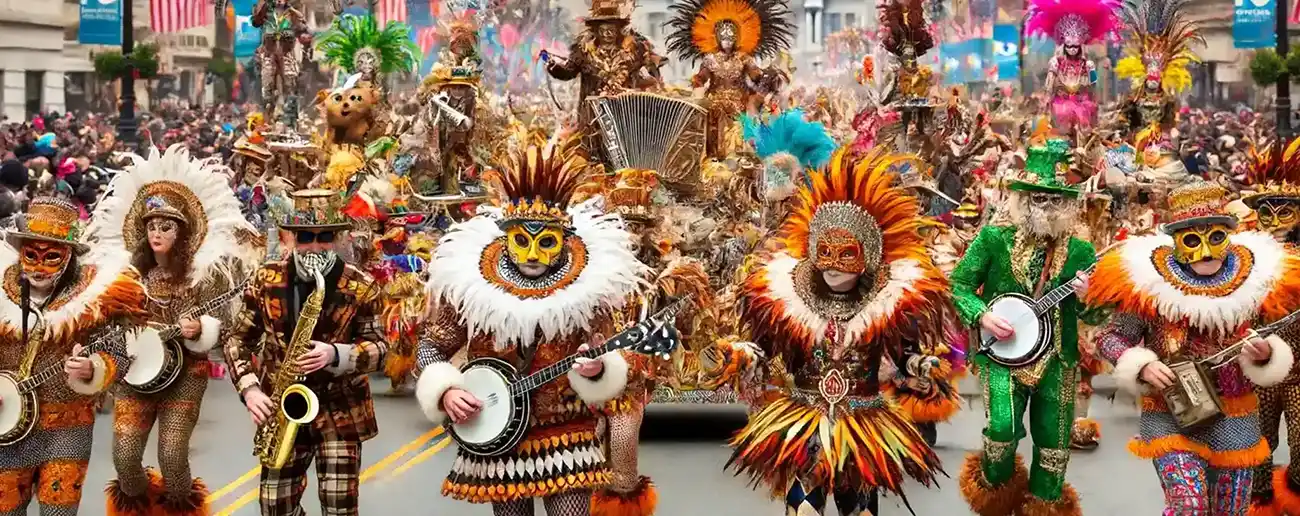
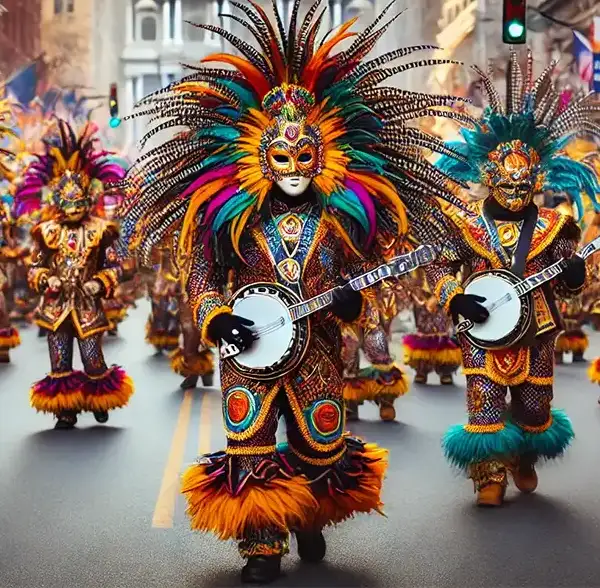
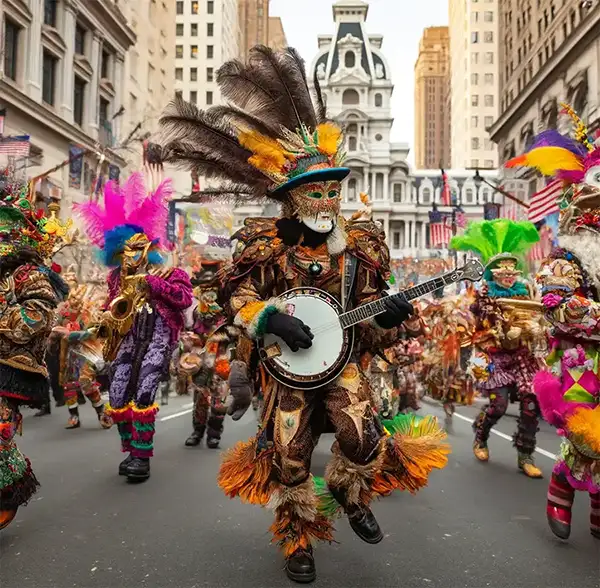









 "Sláinte!" is a traditional Irish expression used as a toast, equivalent to "Cheers!" in English.
"Sláinte!" is a traditional Irish expression used as a toast, equivalent to "Cheers!" in English.